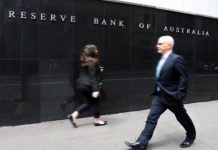What everyone – most investors, every household and every politician want to see and to sense right now is the end of the global monetary policy tightening cycle, and the beginning of the end starts mostly with the Federal Reserve (Fed).
Until the beginning of this month, we have seen a pricing that reflected the market’s belief that the Fed is going to keep the rates high for long because the world is now braced for an extended period of high inflation. And the rapid rise in the US long term yields because of this very belief that the Fed will keep rates high for long helped the Fed keep its rates steady, at least at the latest meetings. The US 10-year yields spiked above the 5% mark in the second half of October, stagnated close to this peak for a week.
Then, a sufficiently soft set of jobs data from the US at the start of the month, combined with a record but lower-than-expected Treasury borrowing plans slowed down the sharp selloff in US Treasuries and reversed market sentiment. Investors, since the beginning of this month, began flocking back into the US long-term papers. The US 10-year yield tipped a toe below the 4.50% level, this time. We are talking about a plunge of more than 50bp for the 10-year paper in about two weeks.
And finally, last week, two bad 10- and 30-year bond auctions in the US, and Fed Chair Powell’s warning that the Fed could opt for more rate hikes if needed, brought bond investors back to earth. And the 10-year yield rebounded from a dip. This is where we are right now – a period of heavy treasury selloff, followed by significant inflows, and uncertainty.
The uncertainty regarding when the Fed will be done hiking the rates is killing everyone, but even the Fed itself doesn’t know when tightening will/should end. It will depend on crucial economic data, like inflation, jobs, and growth figures. The US jobs data is giving signs that the US labour market has started loosening. The US growth numbers are off the chart, but spending isn’t necessarily sitting on solid ground, as the US credit card loans go from peak to peak and the credit card delinquencies have taken a lift. The delinquency rate is above the pre-pandemic levels, and just around the post-GFC levels – this means that the Americans spend on debt that they can’t pay back anymore. And the US government debt is – as you know – growing exponentially, and Americans pay significantly higher interest on their debt because the rates went from near zero to above 5% in less than two years.
But uncertainty regarding the US debt does not mean that the US Treasuries will fall off grace, because there is nothing comparable to the US Treasuries that could replace US treasuries in a portfolio for low-risk allocations.
Volatility in this space is however unavoidable. This week, we will plunge back into the US political saga, as the government short-term funding deadline is due 17th of November and not much progress has been made to seal a fresh deal. And remember this, the last time the US politicians agreed on a short-term relief package, Joe Biden was forced to leave the funding for Ukraine outside of it. Since then, a new war in Gaza popped up, and the US is now expected to bring financial contribution there, as well.
We could see the US long-term yields recover from the past weeks’ decline. Depending on the new funding resolution – or the lack thereof – we could see the US 10-year yield return above 4.80%.
Happily, slower inflows into US treasuries will be a relief for the Fed, which needs the yields to remain high enough to restrict the financial conditions without the need for more action. But the US political shenanigans are only one part of the equation. The other part is…economic data.
The all-important inflation data due Tuesday is going to impact the inflow/outflow dynamics in US Treasuries before the worries grow into the Friday funding deadline. A sufficiently soft inflation read should keep bond traders in appetite for further purchases and mask a part of the political worries, while disappointment could keep buyers on the sidelines and amplify a potential political-led selloff. The good news is that the US headline inflation is expected to have eased to 3.3% in October, from 3.7% printed a month earlier. Core inflation is seen steady around the 4.1% level. The bad news is, the expectation is soft and could be hard to beat.
The US dollar sees resistance at around the 50-DMA, the US stocks continue to cheer the latest pullback in the US yields. The S&P500 closed last week with a beautiful rally, that led the index to above its 100-DMA for the weekly close. The big tech remains the driver of the S&P500 gains as Microsoft hit a fresh high on Friday and Nvidia remained bid a few points below its ATH on news that Chinese AI startup bought enough Nvidia chips before the US exports curbs kicked in. This week, US big retailers will announce their Q3 results and will give a hint on the US consumer trends, health and expectations. Earnings could be mixed but the overall outlook will likely be morose.













